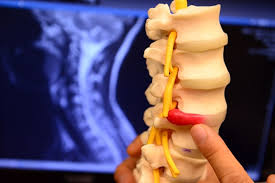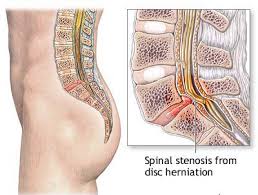
What is Micro-discectomy?
In a microdiscectomy or microdecompression spine surgery, a little divide of the bone over the nerve root and/or plate material from under the nerve root is evacuated to alleviate neural impingement and give more space to the nerve to recuperate.
A microdiscectomy is ordinarily performed for a herniated lumbar circle and is really more successful for treating leg torment (otherwise called radiculopathy) than lower back torment.
Impingement on the nerve root (pressure) can bring about considerable leg torment. While it may take weeks or months for the nerve root to completely recuperate and any deadness or shortcoming to show signs of improvement, patients regularly feel help from leg torment very quickly after a microdiscectomy spine surgery.

What are the types of Micro-discectomy?
For the most part, a microdiscectomy is performed on an outpatient premise (with no overnight stay in the doctor's facility) or with one overnight in the doctor's facility. Post-operatively, patients may come back to an ordinary level of day by day action rapidly.
Some spine specialists confine a patient from bowing, lifting, or winding for the initial six weeks taking after surgery. Be that as it may, since the persistent back is mechanically the same, it is additionally sensible to come back to an ordinary level of working quickly taking after this spine surgery.
There have been two or three reports in the medicinal writing demonstrating that prompt assembly (come back to ordinary action) does not prompt an increment in repetitive lumbar herniated plate.

Sign and Symptoms
All in all, if a tolerant's leg torment because of a circle herniation is going to show signs of improvement; it will do as such in around six to twelve weeks. The length of the torment is decent and the patient can work satisfactorily, it is typically prudent to defer back surgery for a brief time of time to check whether the torment will resolve with non-surgical treatment alone.
In the event that the leg agony improves nonsurgical medicines, then a microdiscectomy surgery is a sensible alternative to assuage weight on the nerve root and rate the recuperating. Quick spine surgery is just essential in instances of gut/bladder incontinence (cauda equina disorder) or dynamic neurological deficiencies. It might likewise be sensible to consider back surgery intensely if the leg torment is serious.
A microdiscectomy is ordinarily prescribed for patients who have:
• Experienced leg torment for no less than six weeks • Not discovered adequate torment help with moderate treatment, (for example, oral steroids, NSAIDs, and exercise based recuperation).

Treatment Procedure
A microdiscectomy is performed through a little (1 inch to 1/2 inch) entry point in the midline of the low back. To begin with, the back muscles (erector spinae) are lifted off the hard curve (lamina) of the spine. Since these back muscles run vertically, they can be moved off the beaten path as opposed to cut.
The specialist is then ready to enter the spine by uprooting a film over the nerve roots (ligamentum flavum), and utilizes either working glasses (loupes) or a working magnifying lens to picture the nerve root. Regularly, a little parcel of within feature joint is uprooted both to encourage access to the nerve root and to calm weight over the nerve.
The nerve root is then tenderly moved to the side and the circle material is expelled from under the nerve root. Significantly, since the majority of the joints, ligaments and muscles are left in place, a microdiscectomy does not change the mechanical structure of the understanding's lower spine (lumbar spine).

